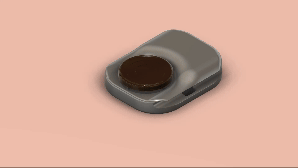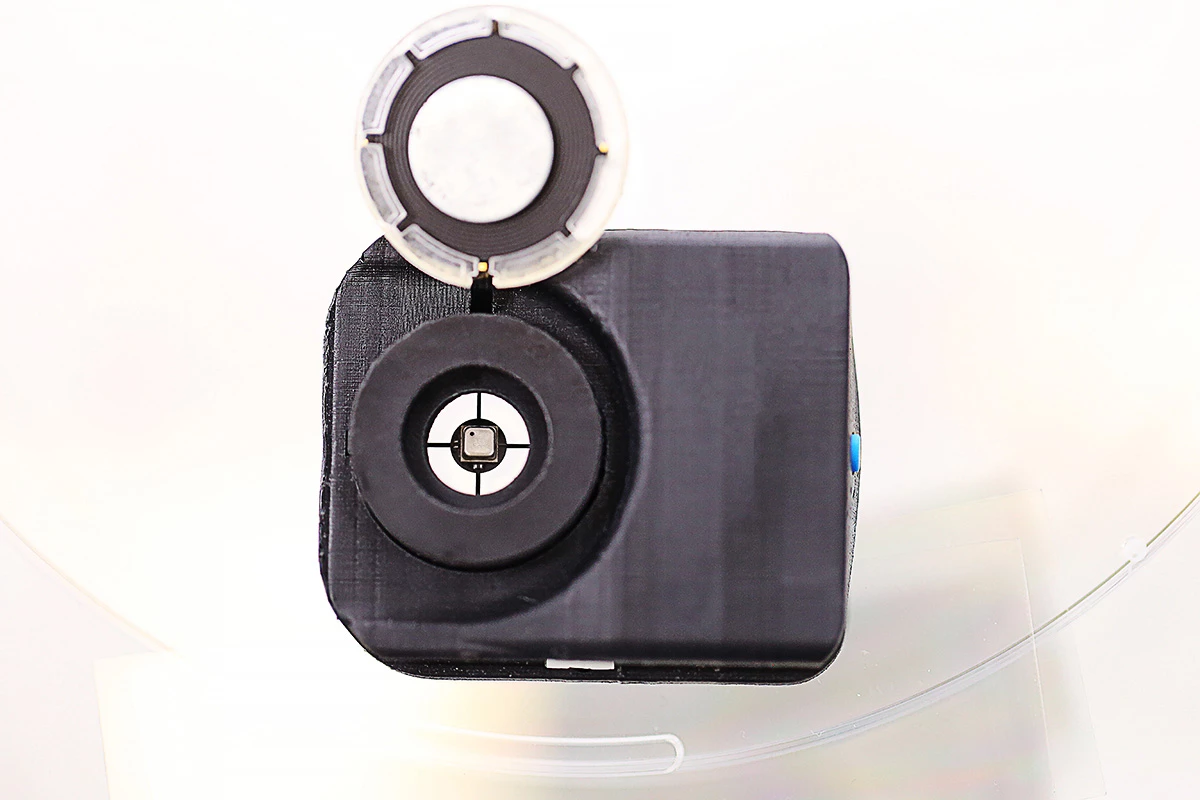Did you know you emit a variety of gases through your skin all day long? These vapors, which include carbon dioxide, water vapor, and volatile organic compounds such as ammonia, can reveal vital information about your metabolic status, disease states, and overall health. Now, there's a wearable that can detect and analyze these for you.
Researchers at Northwestern University in Evanston, Illinois, including the prolific inventor John A. Rogers, have evolved their previous device that analyzed sweat to come up with one that's designed for monitoring Epidermal Molecular Flux (EMF). The matchbox-sized gadget houses a bunch of sensors to measure changes in temperature, and the aforementioned gases by collecting them in a small chamber that doesn't come in contact with your skin.
That last bit is important, because it opens up the device's applications to track infections and wound healing in patients with delicate, sensitive, or damaged skin, including babies, the elderly, and people suffering from diabetes.

"The beauty of our device is that we found a completely novel way to assess the status of delicate skin without having to come in contact with wounds, ulcers or abrasions," explained Northwestern’s Guillermo A. Ameer, who co-led the study published in the journal Nature this week. "This device is the first major step toward measuring changes in gases and correlating those changes with skin status."
There are other devices that collect water vapor to track transepidermal water loss for insights into physiological health. However, the researchers note that theirs is far more compact and doesn't require direct contact with the skin.

Indeed, this wearable is just 0.8 in (2 cm) long and 0.6 in (1.5 cm) wide. It has a valve that automatically opens to allow gases into its chamber. The device first gets a baseline reading from ambient air, then traps emitted gases from a patient's skin in the chamber. Its collection of sensors measures changes in gas concentrations over time.
Finally, the wearable beams the data it's gathered over to a mobile device via Bluetooth, enabling healthcare professionals to quickly determine how best to tend to their patients' wounds or if they need to administer antibiotics.

Ameer explained these insights can be critical to patients' well-being. "Prescribing antibiotics for wounds can be a bit of a gamble," said Ameer, who is an expert on regenerative engineering approaches to improve wound healing. "Sometimes it’s hard to tell if a wound is infected or not. By the time it’s obvious, it might be too late, and the patient can develop sepsis, which is incredibly dangerous. To avoid this, physicians prescribe a wide spectrum of antibiotics. That can lead to antibiotic resistance, which is a growing problem in health care. Being able to closely, continuously monitor a wound and prescribe an antibiotic at the earliest sign of infection is an obvious and important interest."
The device can also reveal whether diabetics' ulcers are actually healing properly, or whether the skin isn't closing up as it should. This can potentially raise the alarm for more intensive treatment and avoid lower limb amputations.
By tracking emitted gases, the wearable can help researchers understand how well lotion- and spray-based bug repellents work too, and even evaluate the safety of cosmetics and skincare products.

The team plans to improve the device by adding a sensor for tracking changes in pH levels, as well as gas sensors to selectively identify compounds that could point to specific diseases.
Source: Northwestern University




